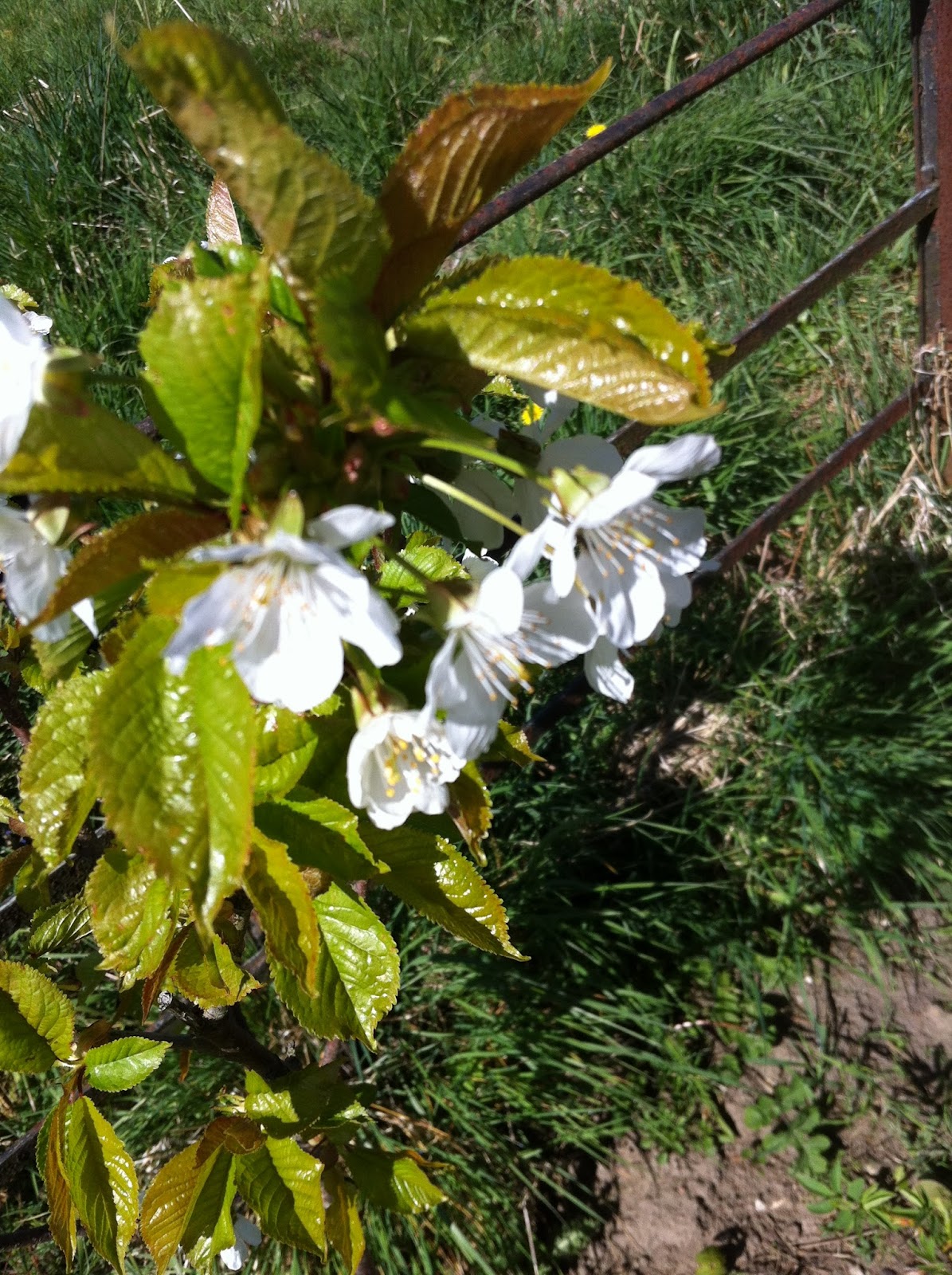This simplistic task of pegging out my whites and admiring the view from between the pegs reminded me how lovely it is to live here, especially when the sky is blue. I have been busy in the garden the last two weekends, investing the time sowing and planting in the hope of bumper crops later in the summer. In addition to planting, I have done a lot of pottering and admiring as you will see!
Not wanting to miss the bluebells this year, I wandered over to a little woody copse a few metres from the end of our garden with my camera.
From a distance this circle of Scot's pines, sycamore and oak doesn't look much and I rarely bother to walk over to it. The children go through phases of making dens in there but most of the time it's taken for granted and we forget it's there.
At this time of year though, there is an unmistakably blue haze that emanates from the lower part of the copse. The bluebells are up. Covering the woodland floor, this circular indigo carpet lines the wooded area.
The fragile nodding bells with their leathery, frondy leaves forbid anyone to enter the woodland grove lest the flowers be crushed underfoot.
On return from the bluebell grove, I noticed that the apple blossom is finally out. Our fruit trees are very small because we planted them when we moved here four years ago. So far, there has been very little fruit but the blossoms suggest we might get more this year.
My job this afternoon was planting courgettes. I always dig a hole about six inches deep, fill it with horse manure, cover it over into a heap like a little mountain and put the courgette plant in the top. Courgettes and squashes are very hungry vegetables and like a lot of nutrients and water, so the mountain stores this inside and the roots travel down to feed. The slightly raised position also ensures the vegetables sit above the ground and don't lie on the soil and rot.
The beans are doing well in the ground. We have set a double row of runner beans and a double row of borlotti beans. White and pink speckled borlotti beans are so lovely in soups and stews. You also don't need to keep an eye on them for getting too big or stringy because they can grow to maturity with the beans getting bigger and more flavoursome inside.
These healthy plants germinated and grew very quickly in our new greenhouse; a huge benefit after the long winter.
Remaining courgettes grow on the windowsills, waiting for us to find time to plant them.
Broad beans finally poke their heads out of the well-hoed soil. I just can't wait to eat them but everything is so far behind, it will be months rather than weeks until they can be eaten.
This forsythia looks spectacular growing around the barn window. It blooms like this for about six days and then the flowers drop off. A reminder that spring is well underway.
Rose red camellia japonica blooms stand out against waxy evergreen leaves.
This cherry tree was planted last year and has a beautiful blousey blossom.
Victoria plum blossom is very open and simplistic in comparison.
Rosemary is thriving against the garden wall in a light sandy soil. The little purpley flowers look pretty as a garnish for potatoes and lamb.
The copper beech by the gate has unfurled its leaves to provide a striking contrast to the lime green of its cousins.
At the end of the day when the sun sinks behind the farm, the colours turn from bright yellows and cerulean to indigo, lime and gold. Time for a well-earned glass of wine.












































